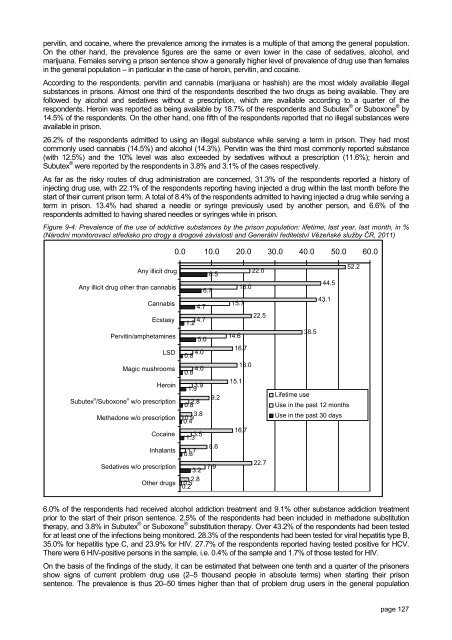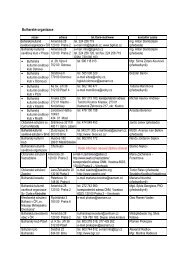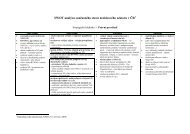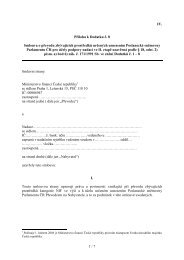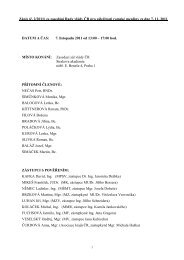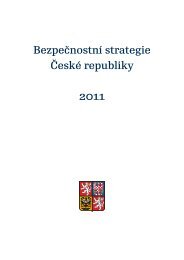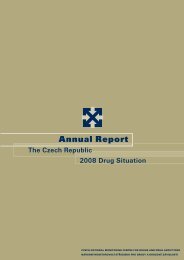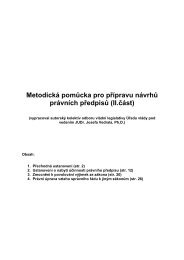The Czech Republic Annual Report 2010 Drug ... - Drogy-info.cz
The Czech Republic Annual Report 2010 Drug ... - Drogy-info.cz
The Czech Republic Annual Report 2010 Drug ... - Drogy-info.cz
You also want an ePaper? Increase the reach of your titles
YUMPU automatically turns print PDFs into web optimized ePapers that Google loves.
pervitin, and cocaine, where the prevalence among the inmates is a multiple of that among the general population.<br />
On the other hand, the prevalence figures are the same or even lower in the case of sedatives, alcohol, and<br />
marijuana. Females serving a prison sentence show a generally higher level of prevalence of drug use than females<br />
in the general population – in particular in the case of heroin, pervitin, and cocaine.<br />
According to the respondents, pervitin and cannabis (marijuana or hashish) are the most widely available illegal<br />
substances in prisons. Almost one third of the respondents described the two drugs as being available. <strong>The</strong>y are<br />
followed by alcohol and sedatives without a prescription, which are available according to a quarter of the<br />
respondents. Heroin was reported as being available by 18.7% of the respondents and Subutex ® or Suboxone ® by<br />
14.5% of the respondents. On the other hand, one fifth of the respondents reported that no illegal substances were<br />
available in prison.<br />
26.2% of the respondents admitted to using an illegal substance while serving a term in prison. <strong>The</strong>y had most<br />
commonly used cannabis (14.5%) and alcohol (14.3%). Pervitin was the third most commonly reported substance<br />
(with 12.5%) and the 10% level was also exceeded by sedatives without a prescription (11.6%); heroin and<br />
Subutex ® were reported by the respondents in 3.8% and 3.1% of the cases respectively.<br />
As far as the risky routes of drug administration are concerned, 31.3% of the respondents reported a history of<br />
injecting drug use, with 22.1% of the respondents reporting having injected a drug within the last month before the<br />
start of their current prison term. A total of 8.4% of the respondents admitted to having injected a drug while serving a<br />
term in prison. 13.4% had shared a needle or syringe previously used by another person, and 6.6% of the<br />
respondents admitted to having shared needles or syringes while in prison.<br />
Figure 9-4: Prevalence of the use of addictive substances by the prison population: lifetime, last year, last month, in %<br />
(Národní monitorovací středisko pro drogy a drogové závislosti and Generální ředitelství Vězeňské služby ČR, 2011)<br />
6.0% of the respondents had received alcohol addiction treatment and 9.1% other substance addiction treatment<br />
prior to the start of their prison sentence. 2.5% of the respondents had been included in methadone substitution<br />
therapy, and 3.8% in Subutex ® or Suboxone ® substitution therapy. Over 43.2% of the respondents had been tested<br />
for at least one of the infections being monitored. 28.3% of the respondents had been tested for viral hepatitis type B,<br />
35.0% for hepatitis type C, and 23.9% for HIV. 27.7% of the respondents reported having tested positive for HCV.<br />
<strong>The</strong>re were 6 HIV-positive persons in the sample, i.e. 0.4% of the sample and 1.7% of those tested for HIV.<br />
On the basis of the findings of the study, it can be estimated that between one tenth and a quarter of the prisoners<br />
show signs of current problem drug use (2–5 thousand people in absolute terms) when starting their prison<br />
sentence. <strong>The</strong> prevalence is thus 20–50 times higher than that of problem drug users in the general population<br />
page 127


